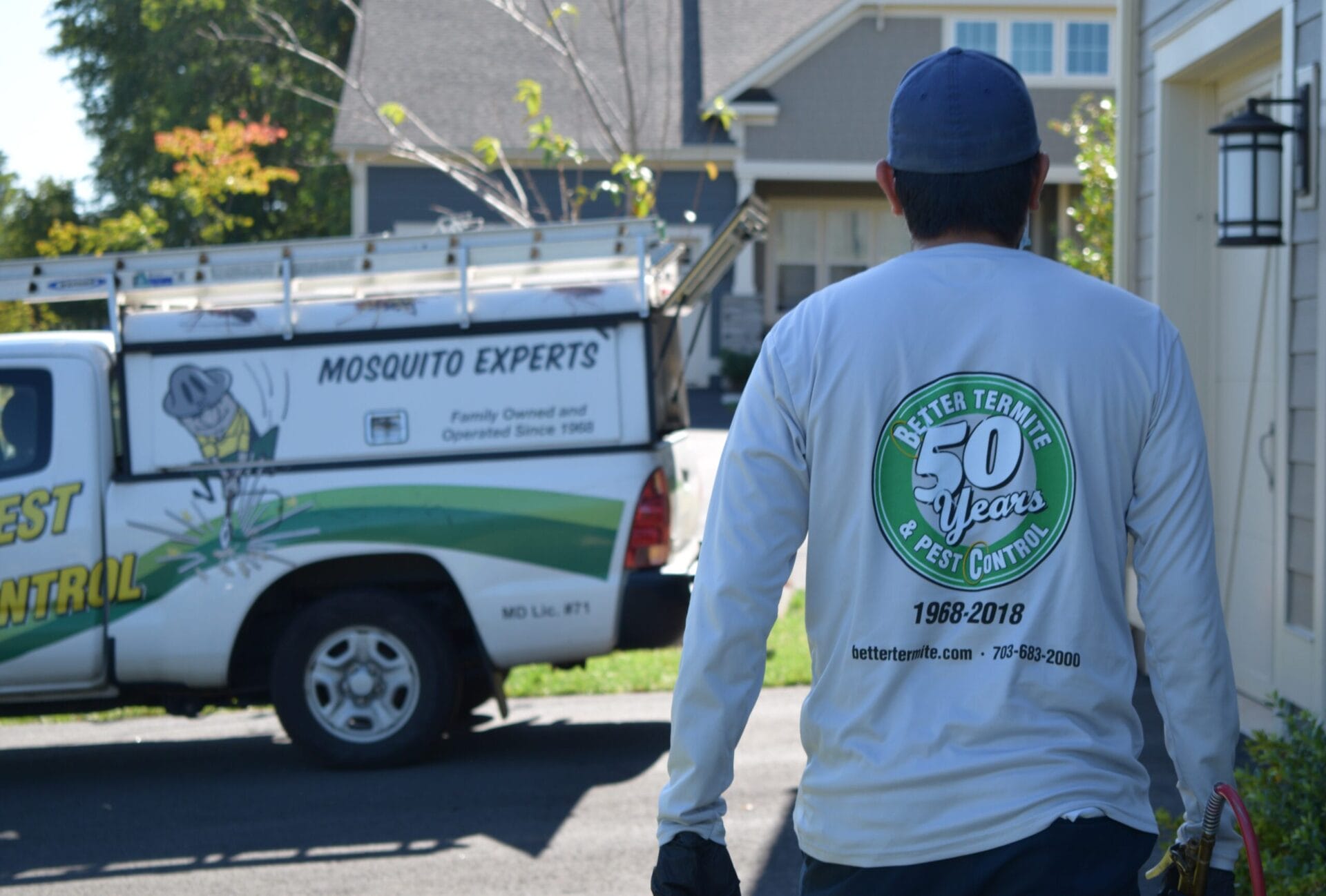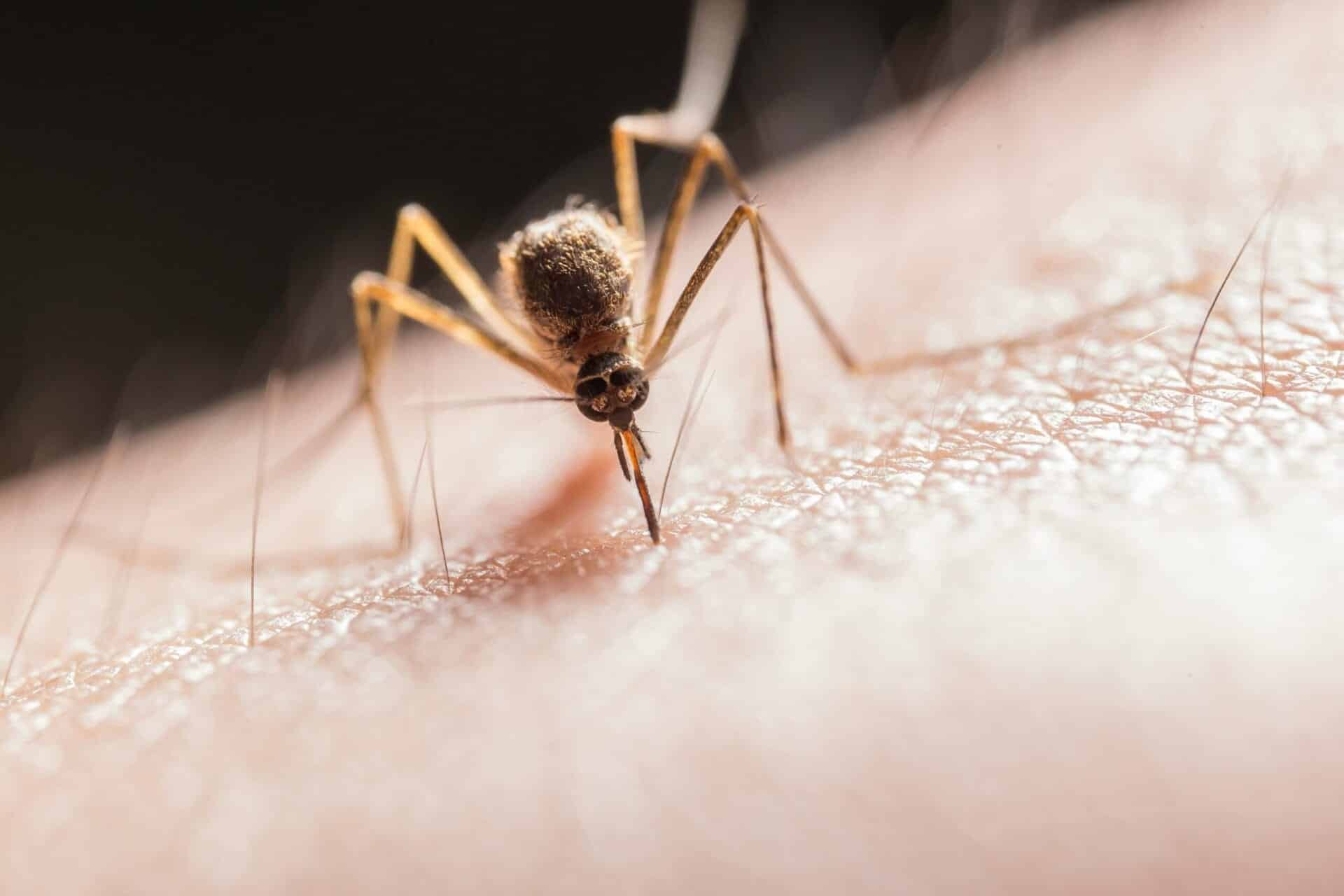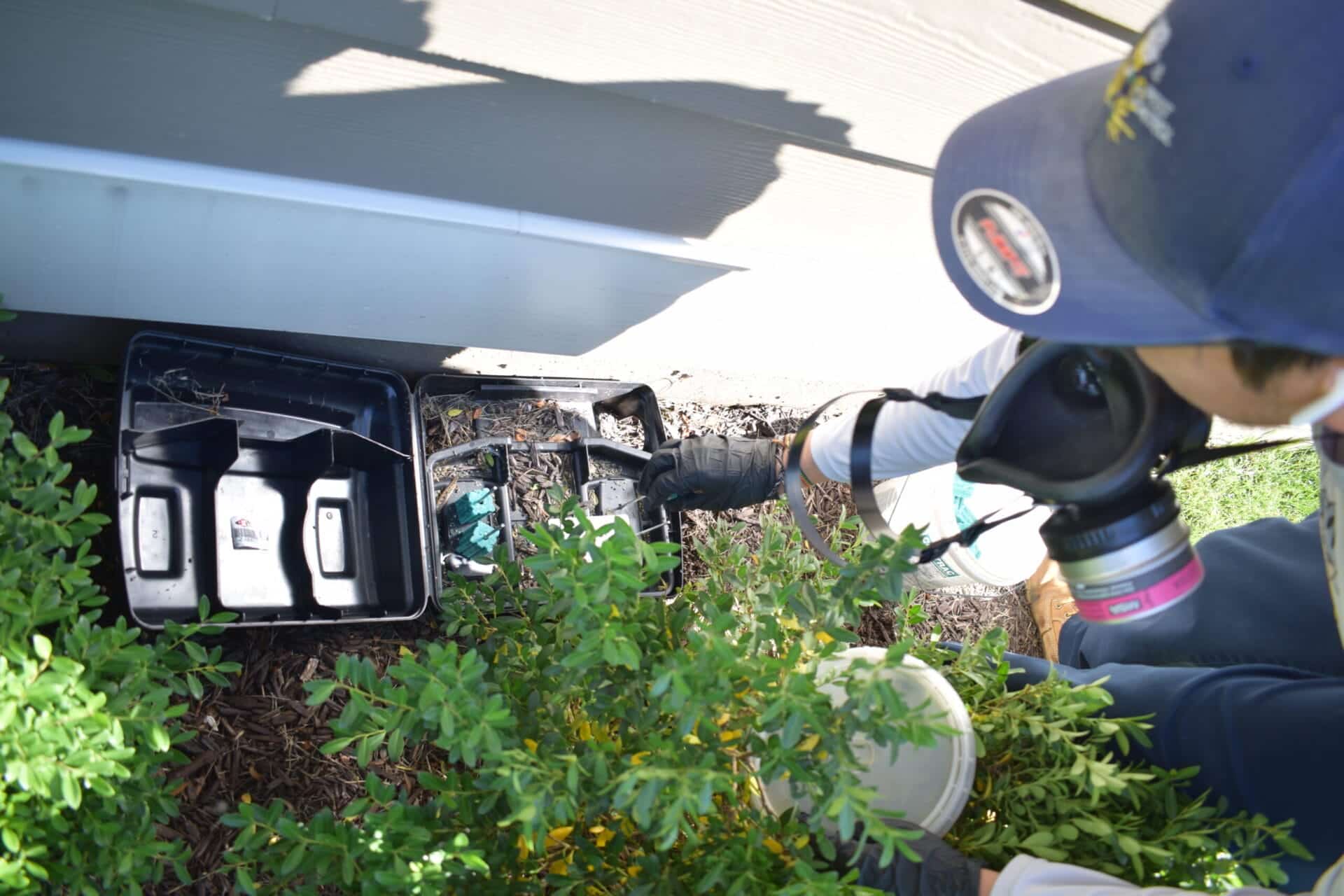


When mysterious bugs show up in your Virginia or Maryland home, it’s easy to panic. Are they bed bugs that will bite you at night? Or stink bugs looking for a warm place to spend winter? Understanding the stink bug vs bed bug differences can save you time, money, and sleepless nights.
After four years as a registered technician and being part of a family business that’s served the DMV area for over 50 years, I’ve seen countless homeowners struggle with this exact question. The good news is that these two pests are actually quite different once you know what to look for.
Quick Navigation
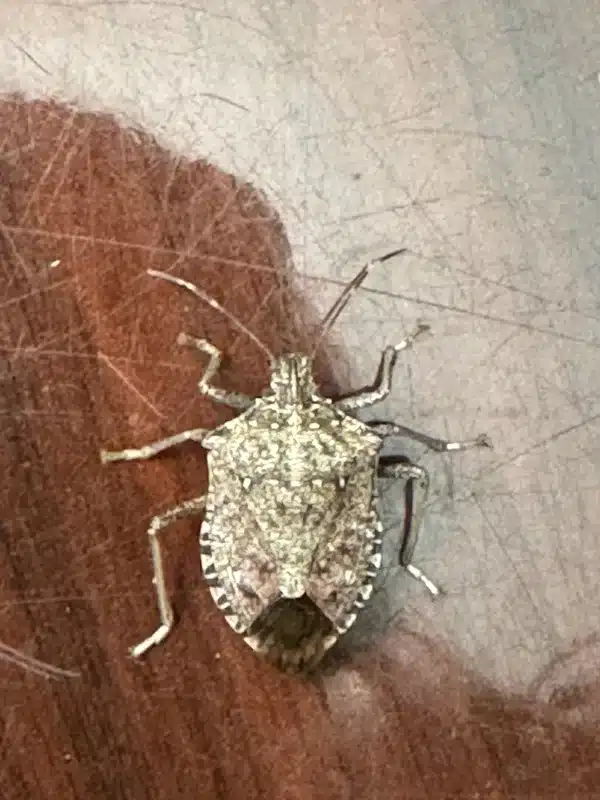
The most obvious difference between stink bugs and bed bugs is their size and shape. Stink bugs are significantly larger, measuring about 14-17 mm (roughly the size of a dime). They have a distinctive shield-shaped body that gives them their scientific family name, Pentatomidae.
Bed bugs, on the other hand, are much smaller at only 5-7 mm. They have a dorsoventrally flattened oval shape that allows them to hide in tight spaces like mattress seams. When you compare stink bug vs bed bug side by side, the size difference is immediately apparent.
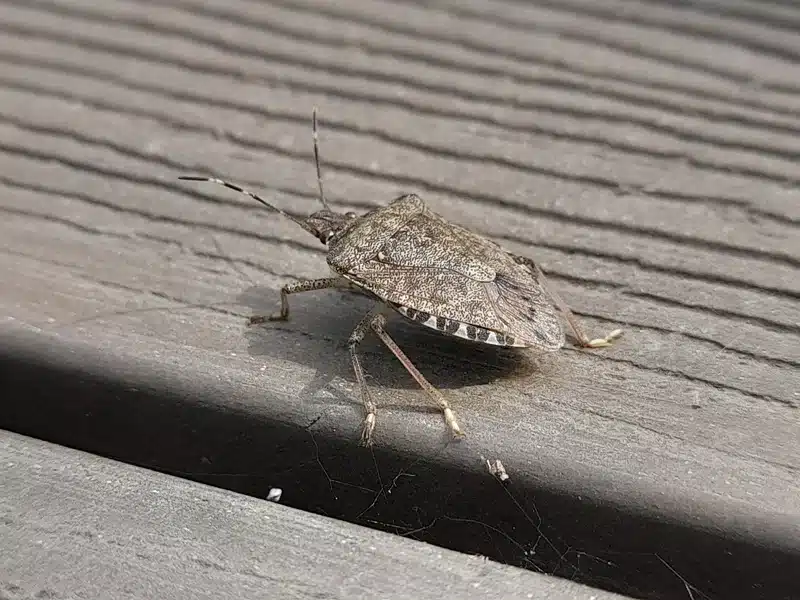
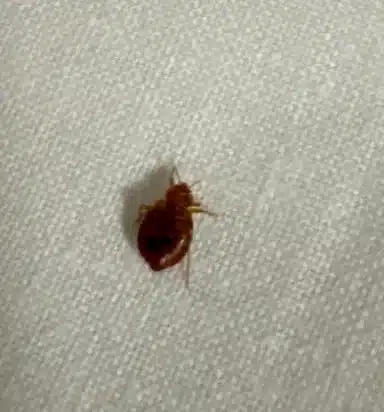
Stink bugs display mottled brown coloring with distinctive white banded antennae. You’ll also notice alternating light and dark bands along their abdominal edges. These markings are particularly helpful for identification.
Bed bugs are typically mahogany-brown when unfed, turning reddish-brown after a blood meal. They lack the distinctive banding patterns that make stink bugs easy to spot. Understanding bed bug appearance can help you distinguish them from other household pests.
Here’s another major difference in the stink bug vs bed bug comparison: stink bugs are fully winged and capable of flight. You’ll often hear them buzzing around windows on warm winter days.
Bed bugs only have vestigial wing pads and cannot fly. This limitation affects how they spread throughout your home and helps explain their different behavior patterns.
🔍 Quick ID Tip: Size is the easiest way to tell these pests apart. Stink bugs are as large as a dime (14-17mm), while bed bugs are smaller than your pinky nail (5-7mm). If you can see the bug clearly from across the room, it’s likely a stink bug.
The location where you discover these bugs often provides the biggest clue in identifying stink bug vs bed bug issues. Each pest has very different habitat preferences based on their feeding needs.
Stink bugs are primarily outdoor insects that feed on plant sap from over 100 different host plants. During spring and summer, you’ll find them on fruit trees, ornamental shrubs, and even soybeans in rural areas.
When temperatures drop in fall, stink bugs seek protected overwintering sites. They commonly aggregate in wall voids, attics, and window casings. Unlike bed bugs, stink bugs don’t mate or lay eggs indoors – they’re just looking for shelter.
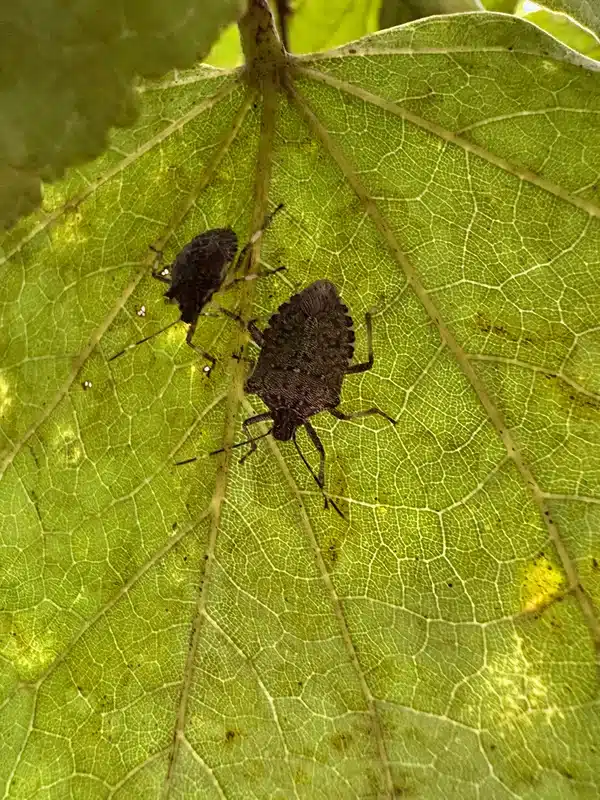
Bed bugs live indoors year-round and stay close to their food source – you. Common hiding spots include mattress seams, box springs, bed frames, and upholstered furniture. They also hide behind baseboards, picture frames, and outlet plates.
According to the Virginia Department of Health, bed bugs typically travel 3-6 feet from their harborage to feed. This means infestations usually start in bedrooms but can spread to other areas over time.
The fundamental difference between these pests lies in what they eat. This affects everything from their behavior to their impact on your family.
Stink bugs are plant-sap feeders with mouthparts designed to pierce plant tissue. They cannot bite humans because their feeding apparatus isn’t capable of penetrating skin. When stink bugs are found indoors, they’re not actively feeding at all.
During their active season, stink bugs can damage garden plants and agricultural crops. However, their impact on homeowners is primarily nuisance-related rather than health-related.
Bed bugs are obligate blood feeders, meaning they require blood meals to survive and reproduce. Each of their five nymphal stages needs a blood meal to molt to the next stage. Adult females need regular blood meals to produce eggs.
These pests are most active at night, following CO₂ and thermal cues to locate sleeping hosts. They typically feed every 3-7 days when conditions are favorable.
One of the most important aspects of the stink bug vs bed bug comparison involves their potential health impacts. The differences here are significant and affect how urgently you need to address each pest.
True stink bug bites are extremely rare because these insects cannot effectively pierce human skin. Their mouthparts are designed for plant tissue, not blood feeding. Most reported “stink bug bites” are actually contact dermatitis from handling crushed bugs.
The main health concern with stink bugs involves their defensive chemicals. When threatened, they release a foul-smelling fluid that can cause allergic skin reactions or eye irritation if contact occurs.
Bed bug bites appear as multiple erythematous papules, often arranged in lines or clusters. The classic “breakfast, lunch, and dinner” pattern occurs when a bed bug feeds multiple times as it moves across your skin.
Bites typically develop 1-3 days after feeding and can cause significant itching and discomfort. While bed bugs don’t transmit diseases according to the CDC, secondary infections from scratching are possible.
⚕️ Health Alert: Stink bugs cannot bite humans – their mouthparts are designed for plants only. If you’re waking up with bite marks, you’re dealing with bed bugs, not stink bugs, and should take immediate action.

Understanding when each pest is most active helps homeowners prepare and identify which pest they’re dealing with. The timing of infestations often provides clear clues in stink bug vs bed bug identification.
In the Mid-Atlantic region, stink bugs overwinter as unfed adults in protected sites. They emerge in late April through May to begin feeding and reproducing outdoors. New adults peak from July through September in our region.
According to Virginia Tech Extension research, brown marmorated stink bugs have a distinctive developmental pattern in the Mid-Atlantic region. Their study shows that overwintering adults become active when sustained temperatures reach 60-65°F, typically in late April. The research documents peak adult emergence from July through September, with timing influenced by photoperiod changes and temperature accumulation rather than simple calendar dates.
The fall invasion of structures typically begins in early September, several weeks earlier than other overwintering pests like lady beetles. This timing coincides with decreasing daylight and cooler nighttime temperatures.
Bed bugs remain active indoors throughout the year because of consistent indoor temperatures. One female can lay over 400 eggs in her lifetime, with development from egg to adult taking about 37 days at room temperature.
This continuous breeding cycle means bed bug populations can explode quickly if left untreated. Unlike stink bugs, which have predictable seasonal patterns, bed bug activity depends more on host availability and indoor conditions.
Recognizing early signs of either pest helps homeowners take appropriate action quickly. The evidence each pest leaves behind is quite different.
Stink bugs are relatively easy to spot because they don’t hide as effectively as bed bugs. Look for shield-shaped adults congregating on south-facing exterior walls during fall or clustering around windows during warm winter days.
You’ll often hear them before you see them – their buzzing flight indoors is quite audible. Most notably, the coriander-like smell when they’re disturbed gives them their common name.
Bed bugs leave several types of evidence that trained eyes can spot. Black fecal spotting appears as small dots on mattresses, sheets, and nearby furniture. You might also notice rusty blood smears on sheets from crushed bugs.
Cast nymphal skins accumulate in mattress seams and other harborages as the bugs grow. In heavy infestations, a sweet, musty odor becomes noticeable. Interception devices placed under bed legs can confirm ongoing activity.
Effective prevention approaches differ significantly between these two pests because of their different behaviors and entry methods.
The best defense against stink bugs is sealing your home before they begin seeking overwintering sites. Focus on gaps ≥ 1/8 inch around windows, soffits, and utility penetrations. Complete this work before September for maximum effectiveness.
Repair window screens and install door sweeps to eliminate entry points. Remove any stink bugs that do get inside using a vacuum cleaner, then empty the contents into soapy water to avoid releasing odors.
Bed bug prevention focuses on avoiding introduction and early detection. Carefully inspect second-hand furniture before bringing it into your home. Understanding pest differences helps you spot problems early.
When traveling, inspect hotel beds thoroughly and keep luggage off floors. Launder and dry clothes on high heat settings when returning home. Reduce clutter in bedrooms and seal gaps around baseboards to eliminate hiding spots.
The stink bug vs bed bug treatment comparison reveals dramatically different strategies based on each pest’s biology and behavior patterns.
Stink bug control emphasizes exclusion and mechanical removal rather than chemical treatments. Interior insecticide applications offer little benefit and create unnecessary exposure risks according to the National Pesticide Information Center.
Perimeter treatments applied in mid-September can reduce entry when timed correctly. However, these treatments must be reapplied after heavy rains and completed before bugs begin aggregating on structures.
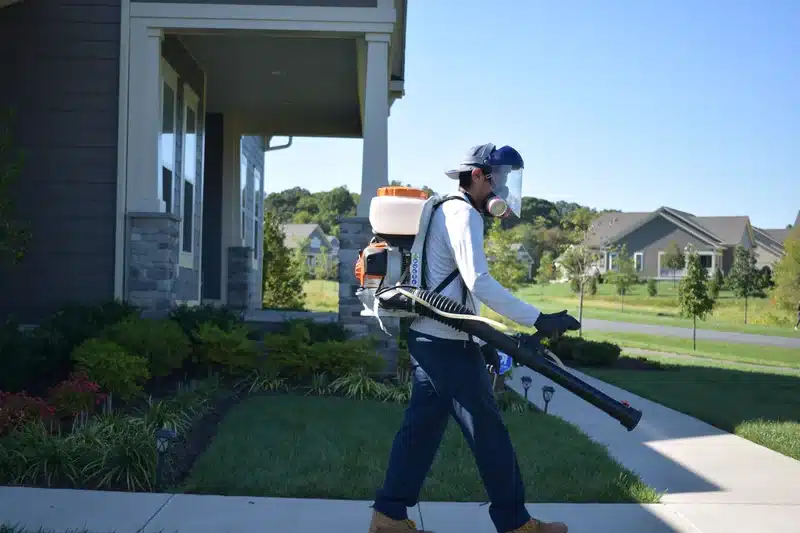
Bed bug elimination requires a comprehensive Integrated Pest Management approach. The EPA recommends a stepwise protocol beginning with confirmation and preparation.
Treatment combines non-chemical methods like heat treatment and targeted chemical applications. Many Virginia and Maryland bed bug populations show resistance to pyrethroid insecticides, making professional treatment often necessary for established infestations.
The complexity of treating stink bug vs bed bug infestations varies significantly, affecting whether homeowners can handle the problem themselves.
Most stink bug issues can be managed through DIY exclusion and removal techniques. Focus your efforts on sealing entry points and vacuuming individual bugs. Light traps with soapy water pans work well for indoor removal.
The key is timing your exclusion work before September when stink bugs begin seeking shelter. Once they’re inside walls for winter, removal becomes more challenging.
While small bed bug introductions might respond to DIY heat treatments and thorough cleaning, established infestations typically require professional intervention. The bugs’ hiding ability and reproduction rate make complete elimination difficult without specialized equipment and products.
Professional treatments often combine heat, targeted chemical applications, and ongoing monitoring to ensure complete elimination. Understanding treatment costs helps homeowners make informed decisions about professional services.
Both pests are well-established throughout Virginia and Maryland, but their distribution patterns reflect their different habitat needs and introduction histories.
Stink bugs are now found statewide in both Virginia and Maryland, representing the primary overwintering nuisance insect reported to Extension offices. The brown marmorated stink bug was first detected in the Mid-Atlantic in the mid-1990s and has since become thoroughly established.
Bed bug incidents show higher concentrations in high-density housing areas and travel hubs. Northern Virginia, Baltimore, and the DC metro area report more bed bug activity due to increased population density and frequent travel through these areas.

Whether you’re dealing with stink bugs or bed bugs, quick identification and appropriate action prevent small problems from becoming major infestations. While stink bugs are primarily a nuisance issue with seasonal patterns, bed bugs require immediate attention due to their rapid reproduction and year-round activity.
Understanding these stink bug vs bed bug differences empowers you to take the right steps for your specific situation. Remember that our family business has been helping Virginia and Maryland homeowners with pest identification and treatment for over 50 years, giving us extensive experience with both pest types.
If you’re unsure which pest you’re dealing with or need professional treatment, don’t hesitate to call us at 703-683-2000 or email us at info@bettertermite.com. Our registered technicians can provide accurate identification and recommend the most effective treatment approach for your specific situation.
Don’t guess when it comes to pest problems. Our experienced technicians can quickly identify whether you’re dealing with stink bugs or bed bugs and provide the right treatment solution.
No, stink bugs cannot effectively bite humans. Their mouthparts are designed for piercing plant tissue, not human skin. Most reported “stink bug bites” are actually skin irritation from contact with their defensive chemicals when the bugs are crushed or handled.
Young stink bugs (nymphs) are actually quite different from bed bugs. First-instar stink bug nymphs are bright orange-red, while bed bugs are brown. Additionally, stink bugs don’t typically infest beds since they don’t feed on blood. If you find bugs in your mattress or bedding, they’re most likely bed bugs.
Stink bugs produce a strong, coriander-like odor when disturbed or crushed – that’s how they got their name. Bed bugs can produce a sweet, musty smell, but only in heavy infestations. Individual crushed bed bugs don’t typically create a noticeable odor like stink bugs do.
Stink bugs begin seeking indoor shelter in early September and continue through October. They emerge from overwintering sites in late April through May. You’re most likely to encounter them indoors during fall invasion and on warm winter days when they become active near windows.
Yes, bed bugs remain active throughout the year because they live in climate-controlled indoor environments. Unlike stink bugs, which have distinct seasonal patterns, bed bugs continue feeding and reproducing as long as hosts are available and temperatures remain suitable indoors.
No, these pests require completely different treatment approaches. Stink bug control focuses on exclusion and mechanical removal, while bed bug treatment requires specialized heat treatments and targeted chemical applications. Using the wrong approach wastes time and money while allowing the problem to worsen.
Bed bugs are significantly more challenging to eliminate due to their small size, excellent hiding ability, and rapid reproduction rate. Stink bugs are primarily seasonal nuisance pests that can often be managed through exclusion and vacuuming, while bed bugs typically require professional treatment for complete elimination.
Neither pest is known to transmit diseases to humans. Stink bugs don’t bite, so disease transmission isn’t a concern. While bed bugs do feed on blood, the CDC has found no evidence that they transmit diseases, though their bites can cause secondary infections from scratching.

With five years of hands-on experience in the pest control industry, George Schulz is a registered technician with the Virginia Pest Management Association and a proud third-generation professional in a family business that’s been protecting homes for over 57 years. He manages and trains a team of service pros while also leading internal research efforts—recently spearheading a deep-dive review of thousands of documents on pest control materials to hand-pick the most kid and pet friendly, most effective solutions tailored specifically for homes in the DC metro area. Read his bio.

